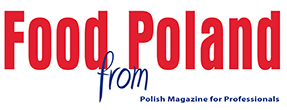In the case of exports, developed countries maintained their dominant position, and their share increased by 1 pp to 87%. The growth rate of exports in this direction reached 3.1%, being higher than the total growth rate of exports (2.1%). 80% of exports in value terms reached the EU (the share remained unchanged y/y), and 57% reached the Eurozone (unchanged). The share of developed countries excluding the EU increased by 1 pp to 7%, mainly due to intensified exports to the USA. The significance of third countries excluding developed ones saw a drop to 13% by the same amount (largely due to a decline in exports to Turkey and the United Arab Emirates).
Imports from developed countries comprised 68% of total imports, 1 pp more y/y. Purchases from these countries increased by 1.3% in view of total imports which reduced by 0.2%. A decline was recorded, above all, in imports from the CIS (-21.1%), and the share of this group dropped by 2 pp to 7%. This was caused, above all, by reduced imports from Russia by almost € 1.6 billion. Less purchases were also made in Ukraine and Belarus. 61% of the imported goods came from the EU (share unchanged y/y), the significance of the Eurozone grew by 1 pp to 49% (the positive growth rate of imports was quite high at 1.9%). Purchases from China, Singapore and the USA were more popular than the year before.
The low growth rate of exports (in 2015, exports increased by 8.3%) should be explained by a slight downturn in the economic situation. The International Monetary Fund projected that in 2016, GDP would grow by 3.1% worldwide (as it did in 2015), and by 1.8% in the developing countries (0.1 pp less than in 2015). Importantly, the IMF cut its projection (in July 2016, in relation to the April projection), which means that the economy has not developed as assumed. Although an improvement of results is expected in Germany (by 0.1 pp, to 1.6%), the economy will also slightly accelerate in France (+0.2 pp, to 1.5%), but in the entire Eurozone, the GDP is supposed to increase by 1.6% in comparison with 1.7% in 2015. On the other hand, the GDP growth rate in the UK in 2016 was estimated at 1.7%, 0.5 pp less year-on-year (the second largest outlet after Germany). Exports were fostered by the depreciation of the zloty in the first half of 2016, particularly noticeable in comparison with the euro, and less so with the dollar. The weakening of the domestic currency was unfavourable for the imports.
Imports recorded a slightly negative dynamics of 0.2% (exports were positive; throughout 2015, imports increased by 5.2%). Purchases from Russia dropped by 24%, i.e. almost € 1.6 billion, being the main factor affecting the results. Lower purchases in Italy, the UK and the Czech Republic were less significant, especially that imports from China, Slovakia and the USA increased.
Of interest is the very high positive foreign trade balance achieved in the first six months of 2016. The surplus of exports over imports amounted to € 4.197 billion and was as much as 92% higher in comparison with the result from the analogous period of 2015. Moreover, for the entire year of 2015, after many markedly loss-making years, a surplus of € 2.3 billion was achieved, significantly lower than the one recorded for the first six months only. This augurs well for trade results of the entire year, but one should take into account the IMF projections on the global economic situation, as cited above. Economic underperformance in countries of key importance for Polish exports may result in a slowdown of exports. The exchange rate between the pound sterling and the zloty will be important too – the British currency plummeted after the Brexit referendum.
Polish foreign trade 2010-2016
Polish agri-food foreign trade 2010-2016
For many years, Germany has been Poland’s most important trade partner, both in terms of exports and imports. In the first half of 2016, sales to the German market grew by 3% year-on-year to € 24.6 billion, whereas imports increased by 3% to € 20.3 billion. In both cases, growth rates were higher than in total trade, however, it should be noted they recorded a strong drop in comparison with the entire year of 2015 (the growth rate of exports was even a double-digit then). As for imports, Germany’s share in Polish trade grew by 1 pp to 24%, and in exports, it remained stable at 27%. Among the top ten largest outlets in terms of value, Russia (a 3% share) was the only non-EU country. However, it was closely followed by the USA. In the case of imports, the top ten largest suppliers included three third countries: China (12%, the second most important supplier), Russia (a 6% share) and the USA (3%). Trade with the top ten partners comprised 67% of total exports and 66% of total imports.
The first half of 2016 brought no significant changes to the share of agri-food products in the total Polish foreign trade, whereas the growth rate of exports was significantly higher then the total trade, in the case of imports, it was lower. The share of exports dropped by 0.1 pp year-on-year to 12.8%, and the share of imports grew by 0.4 pp to 9.4%. The dynamics of change to the share of trade in foods in total trade has undergone minimal changes in recent years. In the first six months of 2016, exports of foods strongly slowed down in comparison with the results from the entire 2015. The growth rate of exports was 1.1% in comparison with 7.7%. The case was similar with imports, dropping by 0.1 pp to 4.6%. The balance of trade in foodstuffs has been positive for years, and in the first half of 2016, it dropped by 6.3% year-on-year (at a growth of 14.3% for the entire 2015) to €3.4 billion. The deterioration of the positive balance resulted from the growth rate of imports being significantly higher than of exports. Exports to China and to African countries experienced a slowdown.












